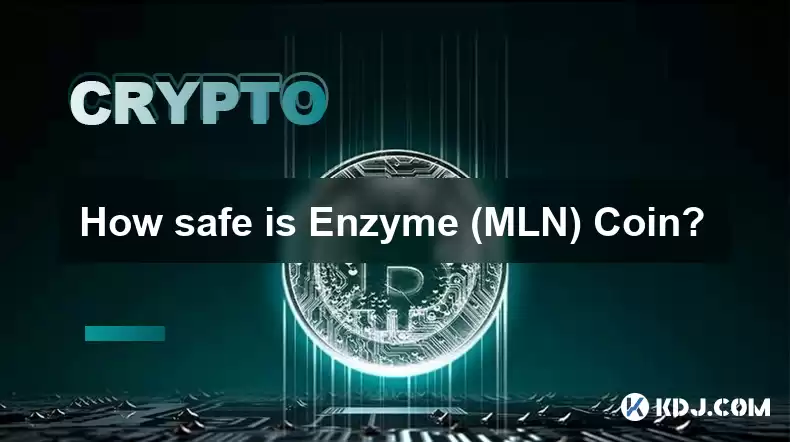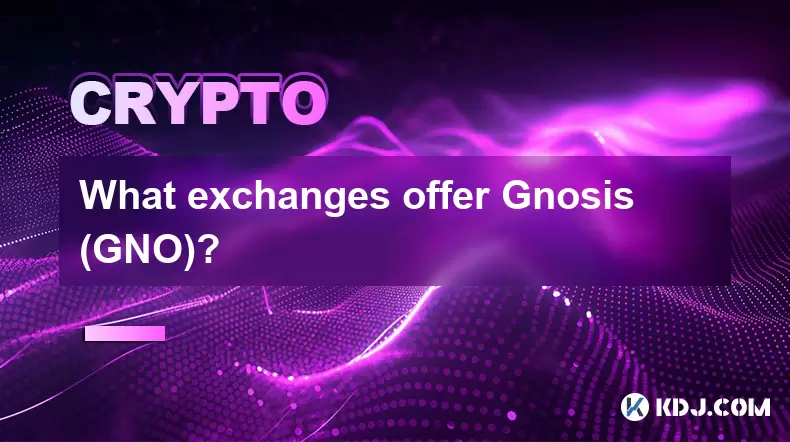-
 Bitcoin
Bitcoin $118600
-2.59% -
 Ethereum
Ethereum $4282
-0.42% -
 XRP
XRP $3.129
-4.21% -
 Tether USDt
Tether USDt $0.0000
0.01% -
 BNB
BNB $805.4
-1.80% -
 Solana
Solana $174.3
-5.77% -
 USDC
USDC $0.9998
-0.01% -
 Dogecoin
Dogecoin $0.2230
-6.33% -
 TRON
TRON $0.3466
1.70% -
 Cardano
Cardano $0.7745
-5.73% -
 Chainlink
Chainlink $21.37
-3.53% -
 Hyperliquid
Hyperliquid $42.93
-7.25% -
 Stellar
Stellar $0.4324
-4.94% -
 Sui
Sui $3.660
-7.17% -
 Bitcoin Cash
Bitcoin Cash $591.6
2.72% -
 Hedera
Hedera $0.2467
-7.04% -
 Ethena USDe
Ethena USDe $1.001
0.00% -
 Avalanche
Avalanche $22.92
-6.14% -
 Litecoin
Litecoin $118.8
-3.79% -
 Toncoin
Toncoin $3.378
-0.46% -
 UNUS SED LEO
UNUS SED LEO $9.011
-1.15% -
 Shiba Inu
Shiba Inu $0.00001294
-5.81% -
 Uniswap
Uniswap $11.24
0.53% -
 Polkadot
Polkadot $3.870
-6.16% -
 Cronos
Cronos $0.1662
-1.68% -
 Dai
Dai $1.000
0.02% -
 Ethena
Ethena $0.7915
-5.62% -
 Bitget Token
Bitget Token $4.414
-1.65% -
 Monero
Monero $259.3
-3.85% -
 Pepe
Pepe $0.00001120
-8.29%
How safe is Enzyme (MLN) Coin?
Enzyme (MLN) Coin's security measures, including smart contract security audits and codebase freezing, aim to mitigate risks associated with smart contract exploits and unauthorized modifications, ensuring the safety of its users' investments.
Jan 01, 2025 at 04:59 am

Enzyme (MLN) Coin: A Comprehensive Guide to its Security
Enzyme (MLN) Coin is a decentralized protocol that enables users to create, manage, and invest in their custom digital asset portfolios. While cryptocurrency investments can be inherently risky, the safety and security of Enzyme (MLN) Coin are of utmost importance for investors. This article provides a comprehensive analysis of the security measures implemented by Enzyme (MLN) Coin, addressing potential risks and outlining steps to mitigate them.
Key Points:
- Enzyme (MLN) Coin is secured by multiple layers of protection, including smart contract security audits, codebase freezing, and a bug bounty program.
- The use of decentralized infrastructure and multi-signature wallets enhances the security of Enzyme (MLN) Coin.
- Risk management tools such as diversification and loss prevention mechanisms help investors minimize their exposure to potential losses.
Security Measures:
- Smart Contract Security Audits:
Enzyme (MLN) Coin's smart contracts have undergone rigorous security audits by leading blockchain auditors like Certik and SlowMist. These audits identify potential vulnerabilities and flaws in the code, ensuring its robustness and resistance to malicious attacks. - Codebase Freezing:
Once the Enzyme (MLN) Coin smart contracts are audited and deployed, the codebase is frozen. This prevents unauthorized modifications, upgrades, or malicious tampering with the network. - Bug Bounty Program:
Enzyme (MLN) Coin incentivizes security researchers and ethical hackers to report any vulnerabilities or bugs in the platform. This program rewards responsible disclosure, promoting transparency and continuous improvement in security measures. - Decentralized Infrastructure:
Enzyme (MLN) Coin is hosted on a decentralized network, distributing control across multiple nodes. This decentralized architecture minimizes the risk of a single point of failure or malicious takeover, enhancing the overall security of the platform. - Multi-Signature Wallets:
Enzyme (MLN) Coin requires the use of multi-signature wallets for managing funds and assets. These wallets require multiple authorized signatures before funds can be transferred or transactions executed. This additional layer of security makes it difficult for unauthorized access or theft. - Diversification:
Enzyme (MLN) Coin enables users to create diversified investment portfolios, reducing their exposure to individual asset risks. This strategy minimizes the potential impact of any single asset's underperformance or value fluctuations. - Loss Prevention Mechanisms:
Enzyme (MLN) Coin offers various loss prevention mechanisms such as adjustable risk parameters and automated stop-loss triggers. These mechanisms allow users to define specific conditions under which investments are automatically liquidated to prevent excessive losses.
FAQs:
Q: Is Enzyme (MLN) Coin more secure than other cryptocurrencies?
A: Enzyme (MLN) Coin employs multiple security measures, including smart contract audits, codebase freezing, and decentralized infrastructure, making it comparable or superior to other reputable cryptocurrencies in terms of security.
Q: What are the biggest risks associated with Enzyme (MLN) Coin?
A: The primary risks associated with Enzyme (MLN) Coin include smart contract exploits, hacking of wallets or exchanges, and market volatility. However, the security measures in place aim to mitigate these risks effectively.
Q: How can I protect my Enzyme (MLN) Coin investments?
A: To protect your Enzyme (MLN) Coin investments, practice secure wallet management, enable two-factor authentication, diversify your portfolio, and understand the risks associated with the platform.
Disclaimer:info@kdj.com
The information provided is not trading advice. kdj.com does not assume any responsibility for any investments made based on the information provided in this article. Cryptocurrencies are highly volatile and it is highly recommended that you invest with caution after thorough research!
If you believe that the content used on this website infringes your copyright, please contact us immediately (info@kdj.com) and we will delete it promptly.
- Dogecoin, Presale, Surge: Riding the Meme Coin Wave
- 2025-08-12 11:10:12
- Dogecoin, Tron, and the ROI Reality Check: What's a Crypto Investor to Do?
- 2025-08-12 11:15:12
- Ethereum Layer-2 Scaling Competition Heats Up as ETH Breaks $4K
- 2025-08-12 10:30:12
- China Regulation, Stablecoins, and BNB Presale: Navigating the Crypto Landscape
- 2025-08-12 11:30:12
- Meme Coins, Investment, and Token Burns: What's Hot in 2025?
- 2025-08-12 10:30:12
- China's National Security Alarm Bells Ring Over Worldcoin's Iris Scans
- 2025-08-12 11:35:12
Related knowledge

How to purchase Aragon (ANT)?
Aug 09,2025 at 11:56pm
Understanding Aragon (ANT) and Its PurposeAragon (ANT) is a decentralized governance token that powers the Aragon Network, a platform built on the Eth...

Where to trade Band Protocol (BAND)?
Aug 10,2025 at 11:36pm
Understanding the Role of Private Keys in Cryptocurrency WalletsIn the world of cryptocurrency, a private key is one of the most critical components o...

What is the most secure way to buy Ocean Protocol (OCEAN)?
Aug 10,2025 at 01:01pm
Understanding Ocean Protocol (OCEAN) and Its EcosystemOcean Protocol (OCEAN) is a decentralized data exchange platform built on blockchain technology,...

Where can I buy UMA (UMA)?
Aug 07,2025 at 06:42pm
Understanding UMA and Its Role in Decentralized FinanceUMA (Universal Market Access) is an Ethereum-based decentralized finance (DeFi) protocol design...

What exchanges offer Gnosis (GNO)?
Aug 12,2025 at 12:42pm
Overview of Gnosis (GNO) and Its Role in the Crypto EcosystemGnosis (GNO) is a decentralized prediction market platform built on the Ethereum blockcha...

How to buy Storj (STORJ) tokens?
Aug 09,2025 at 07:28am
Understanding Storj (STORJ) and Its Role in Decentralized StorageStorj is a decentralized cloud storage platform that leverages blockchain technology ...

How to purchase Aragon (ANT)?
Aug 09,2025 at 11:56pm
Understanding Aragon (ANT) and Its PurposeAragon (ANT) is a decentralized governance token that powers the Aragon Network, a platform built on the Eth...

Where to trade Band Protocol (BAND)?
Aug 10,2025 at 11:36pm
Understanding the Role of Private Keys in Cryptocurrency WalletsIn the world of cryptocurrency, a private key is one of the most critical components o...

What is the most secure way to buy Ocean Protocol (OCEAN)?
Aug 10,2025 at 01:01pm
Understanding Ocean Protocol (OCEAN) and Its EcosystemOcean Protocol (OCEAN) is a decentralized data exchange platform built on blockchain technology,...

Where can I buy UMA (UMA)?
Aug 07,2025 at 06:42pm
Understanding UMA and Its Role in Decentralized FinanceUMA (Universal Market Access) is an Ethereum-based decentralized finance (DeFi) protocol design...

What exchanges offer Gnosis (GNO)?
Aug 12,2025 at 12:42pm
Overview of Gnosis (GNO) and Its Role in the Crypto EcosystemGnosis (GNO) is a decentralized prediction market platform built on the Ethereum blockcha...

How to buy Storj (STORJ) tokens?
Aug 09,2025 at 07:28am
Understanding Storj (STORJ) and Its Role in Decentralized StorageStorj is a decentralized cloud storage platform that leverages blockchain technology ...
See all articles

























































































